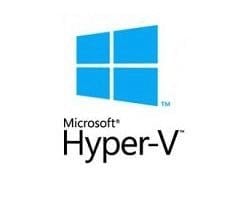WonderWoman
Member
- Local time
- 7:13 AM
- Posts
- 28
- OS
- Windows 11 Pro v. 23H2
Hello,
I will be starting to create multiple VMs that will all be running Win11 Pro in Hyper-v on my Win11 Pro computer. I know that it is easy to just create them one by one but I want to learn some more advanced methods to enhance my skills/knowledge. I am aware that there's a method to create multiple VMs at once but I have never done it before. One thing to note about my skills/knowledge is that I am EXTREMELY WEAK on everything that gets done either through a command prompt or Powershell, so to anyone helping, I appreciate the help but I will need more than the ordinary hand holding so-to-speak.
I did see some post on here referencing "copy any vhdx and attach to new vm" which sounds like it might be what I need to do. Can I get some more details on that process along with any articles to read or tutorials to watch?
I will be starting to create multiple VMs that will all be running Win11 Pro in Hyper-v on my Win11 Pro computer. I know that it is easy to just create them one by one but I want to learn some more advanced methods to enhance my skills/knowledge. I am aware that there's a method to create multiple VMs at once but I have never done it before. One thing to note about my skills/knowledge is that I am EXTREMELY WEAK on everything that gets done either through a command prompt or Powershell, so to anyone helping, I appreciate the help but I will need more than the ordinary hand holding so-to-speak.
I did see some post on here referencing "copy any vhdx and attach to new vm" which sounds like it might be what I need to do. Can I get some more details on that process along with any articles to read or tutorials to watch?
- Windows Build/Version
- Windows 11 Pro 23H2 Version 10.0.22631 Build 22631
My Computers
System One System Two
-
- OS
- Windows 11 Pro v. 23H2
- Computer type
- Laptop
- Manufacturer/Model
- MSI Katana GF66 11UE
- CPU
- Intel Core i7
- Memory
- 32GB
-
- Operating System
- Windows 11 Pro 23H2 Version 10.0.22631 Build 22631
- Computer type
- PC/Desktop
- Manufacturer/Model
- DIY Self Built
- CPU
- Intel 13th Gen Core i9 13900K
- Motherboard
- MSI MPG Edge Z790 DDR4 Wi-Fi
- Memory
- 3GB
- Graphics card(s)
- ZOTAC Gaming GEForce RTX 3080 Trinity White
- Sound Card
- NONE
- Hard Drives
- 2x Samsung 980 Pro SSD 2TB M.2 NVMe
- PSU
- Phanteks 1000w
- Case
- Mars Gaming Pink
- Cooling
- Corsair Hydro-x system, pump/res, CPU block & radiator w/their brand coolant liquid
- Other Info
- Build completed. Currently using it



















